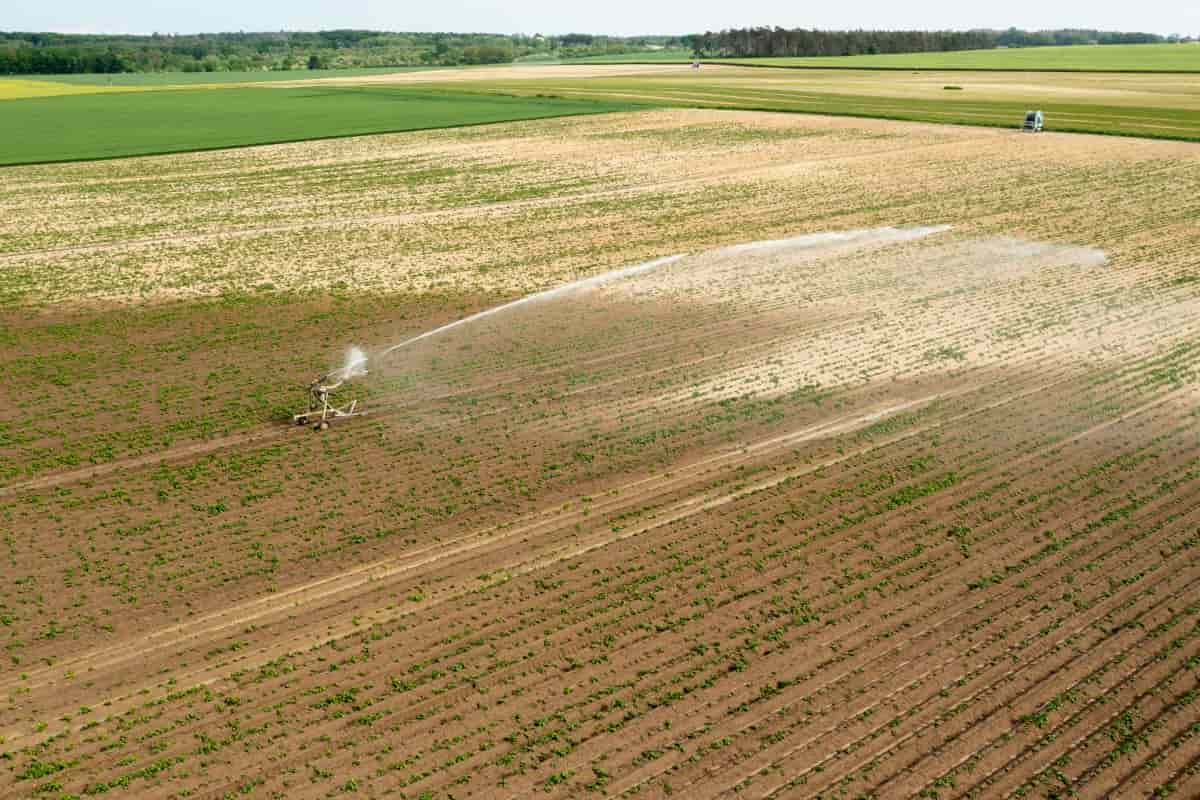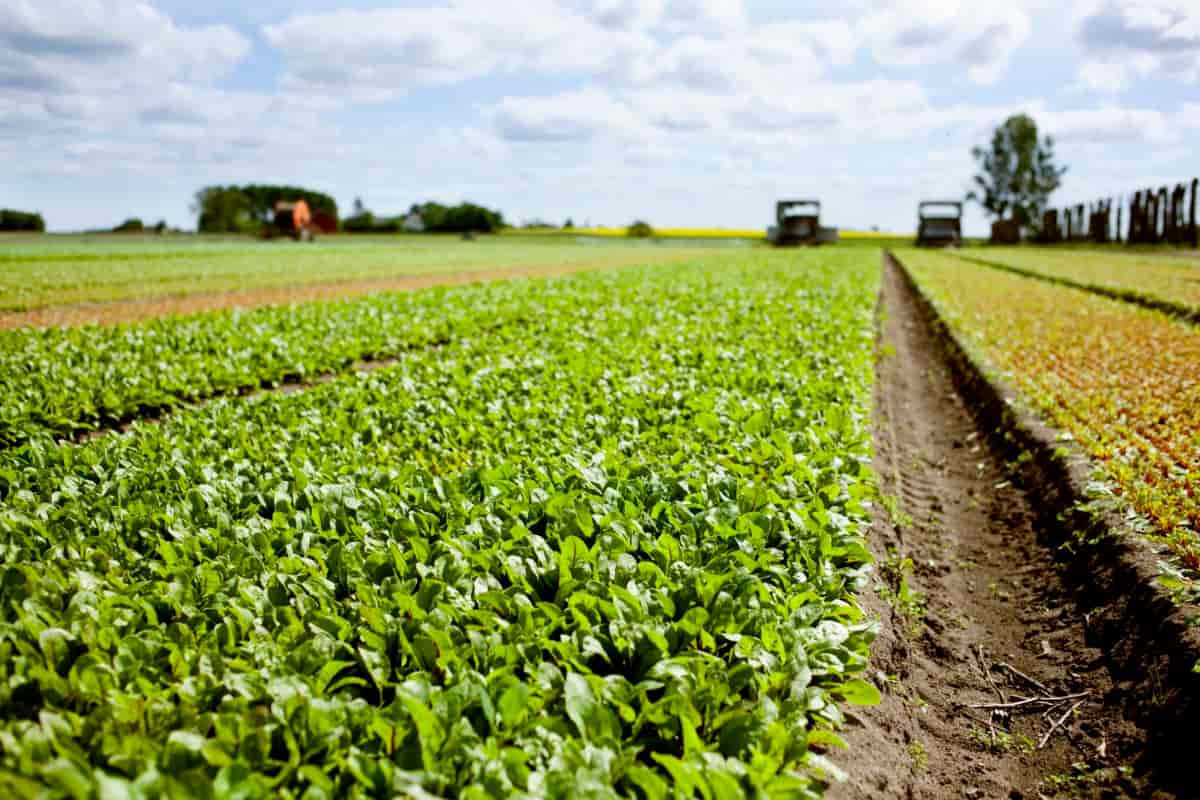Moisture stress occurs when the soil water supply is not equal to the amount needed by the plant, as determined by the atmosphere, assuming complete crop cover. There are some plant processes that are relatively insensitive to increased moisture stress within the available range, while others are clearly affected. When the transpiration rate increases, the upper leaves’ turgor pressure decreases.

Moisture Stress Management In Horticulture Crops
Development of Moisture Stress in Horticulture Crops
Plants experience water deficits whenever transpiration exceeds absorption. It may be caused by excessive water loss, reduced soil water absorption, or both. Water deficits develop gradually after irrigation or rain. Despite adequate soil moisture, water deficits develop on hot days due to higher transpiration than absorption. Incipient wilting and middy depression are terms used to describe this temporary wilting.
As soil moisture depletes, plants cannot absorb enough water to meet the high demand as the day progresses. As a result, there is a prolonged period of water deficit; stomata open briefly in the morning and evening, then partially close during the day. As the soil moisture reaches –15 bars, plants show wilting symptoms most of the day but do not die, known as an area of permanent wilting. When plants receive irrigation or rain, they recover. The ultimate wilting point is reached when the soil moisture depletes to -60 bars, causing plants to die permanently.
Effects of Moisture Stress on Plant Growth
- Maturity is generally delayed by moisture stress. When stress occurs before flowering, the crop’s duration increases, and when it occurs after flowering, the crop’s duration decreases.
- Stress generally affects the organ growing the fastest at the time. Because cells expand and divide less, leaves, stems, and fruits grow slower due to moisture stress.
- Moisture stress affects nitrogen fixation, uptake, and assimilation. In stressed plants, nitrogenase activity is lower in the nodules. Nodule formation in leguminous crops is also delayed by moisture stress.
- Moisture stress may or may not reduce nutrient content, but it does reduce dry matter production significantly. Therefore, nutrient uptake is reduced.
- Hormonal balance is altered as a result of water deficits. An increase in growth-regulating hormones such as abscisic acid and ethylene accompanies a decrease in growth-promoting hormones such as cytokinin and gibberellic acid.
- Moisture stress reduces photosynthesis by reducing photosynthetic rate, chlorophyll content, and leaf area and increasing assimilation saturation.
- A moisture-stressed plant typically reduces leaf water potential and relative water content. The temperature of leaves and canopy increases when there is a water deficit.
In case you missed it: Benefits of Baking Soda for Houseplants

Strategies for Manage Moisture Stress in Horticultural Crops
Choosing the Right Crops And Varieties
It is important to select varieties with a good root system and the ability to recover after stress has been alleviated. Short-duration varieties are recommended in some situations.
Improvements in the Production of Seedlings
Improved seedling production methods, like Protray has grown seedlings, can produce sturdy, uniform, and healthy seedlings through the use of coco peat, nylon net protection, bio-fertilizers, or bio-pesticides at the nursery stage.
Techniques for Preserving Soil and Moisture
- For in-situ soil moisture conservation, contour cultivation, contour trip crops, mixed crops, tillage, mulching, and zero tillage can be used.
- For effective soil and moisture conservation in drylands, mechanical measures such as contour bunding, graded bunding, bench terracing, vertical mulching, etc., are also necessary.
- Runoff water can be collected in ponds and tanks dug out of depressions or gullies and stored in earthen or masonry dams.
Increasing Soil Organic Matter Content
Organic carbon in the soil must be improved constantly. Organic matter status, soil structure, and soil moisture storage capacity are improved by adding crop residues and farmyard manure to the soil. By following agroforestry, crop rotation, alley cropping, and green manuring, the organic matter content of the soil can also be improved.
Nutrition in Foliar Applications
When nutrients are applied in foliar form during water stress conditions, the plant can absorb them more quickly, resulting in better growth. Spraying K and Ca on vegetable crops induces drought tolerance. Crop yields and quality are improved when micronutrients and secondary nutrients are sprayed.
Irrigation Using Drip Lines
Horticulture has proven that drip irrigation is superior to conventional irrigation methods due to its precise and direct water application to the root zone. Among the additional advantages of drip irrigation are significant water savings, increased growth, development, and yields of fruits and vegetables, weed control, and labor savings. In addition to fruit crops, drip irrigation can be used on all vegetables, even closed-spaced crops like onions and beans.
Irrigation with Micro-sprinklers
Depending on the situation and availability of water, this technology can be used to grow fruit and vegetables. Initial installation costs are lower than those of a drip system. Furthermore, sprinkling water in summer reduces microclimate temperatures and increases humidity, which improves crop growth and yield. Up to 30 percent of water is saved.
Practices of Mulching In Vegetable Production
Organic materials and crop residues can be used to mulch fruits and vegetables. Plastic mulches have gained popularity in recent years due to their inherent advantages of preserving moisture, suppressing weeds, and maintaining soil structure. Mulches are useful for growing a wide range of vegetables. Furthermore, it increases yield and quality, suppresses weed growth, and conserves soil and water.
Use of Windbreaks, Hedges, and Intercropping
To overcome the adverse effects of high temperatures and dry winds, tall trees should be planted along the farm’s boundary. During the summer, vegetable crops can be intercropped in orchards in the area. You can mitigate the effects of desiccating winds by growing maize or sorghum along the plot’s border.
Vegetable Cultivation Under Protected Conditions
Biological and abiotic constraints can be protected from crops by a protective structure. The most common structures for protected cultivation are greenhouses, plastic/net houses, and tunnels. A polyhouse and a net or shade house are two common protected structures. Crops affected by excessive rainfall and moisture loss from soil and plants benefit from rain shelters, which are simple structures covered with polyethylene sheets.
In case you missed it: The Best Fertilizer for Hyacinth: When and How to Apply

Conclusion
Moisture stress affects photosynthesis by preventing the absorption of carbon dioxide. Plants’ physiology is adversely affected by water stress, especially their ability to photosynthesize. Plant growth and productivity are severely affected if the stress lasts long. Physiologically and biochemically, plants have evolved complex adaptations to cope with various environmental stresses. The above strategies can be implemented in horticultural crops to overcome moisture stress.
- Feed Your Flock for Less: Top 10 Tips to Save on Chicken Feed
- Ultimate Guide to Ossabaw Island Hog: Breeding, Raising, Diet, and Care
- Hatching Answers: The Top 10 Reasons Your Chickens Aren’t Laying Eggs
- Eggs and Economics: Breaking Down the Cost of Raising Backyard Chickens
- Defend Your Greens: Proven Methods to Keep Iguanas Out of Your Garden
- Ultimate Guide to Cinnamon Queen Chicken: A Comprehensive Guide for Beginners
- Ultimate Guide to California Tan Chicken: Breeding, Raising, Diet, Egg-Production and Care
- Ultimate Guide to Marsh Daisy Chicken: Breeding, Raising, Diet, and Care
- 10 Types of Chicken Farming Businesses You Can Start for Profits